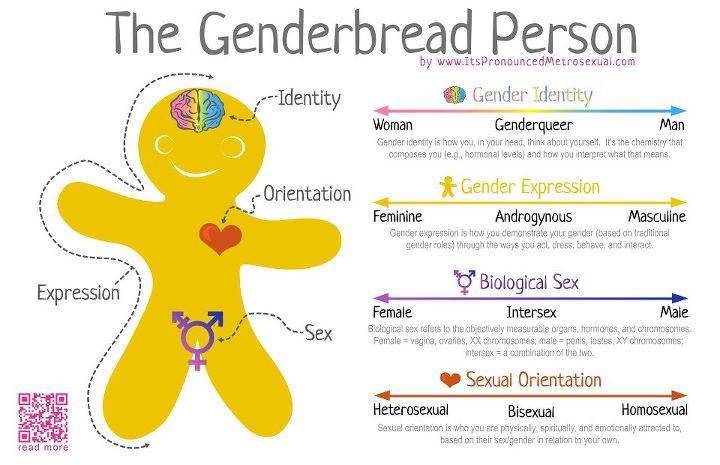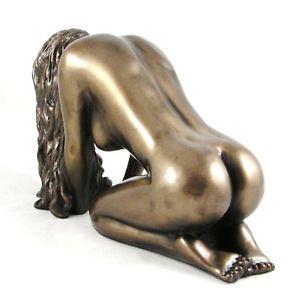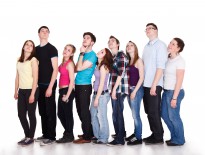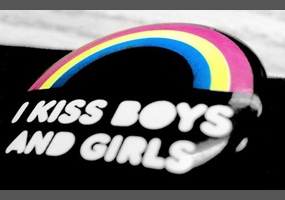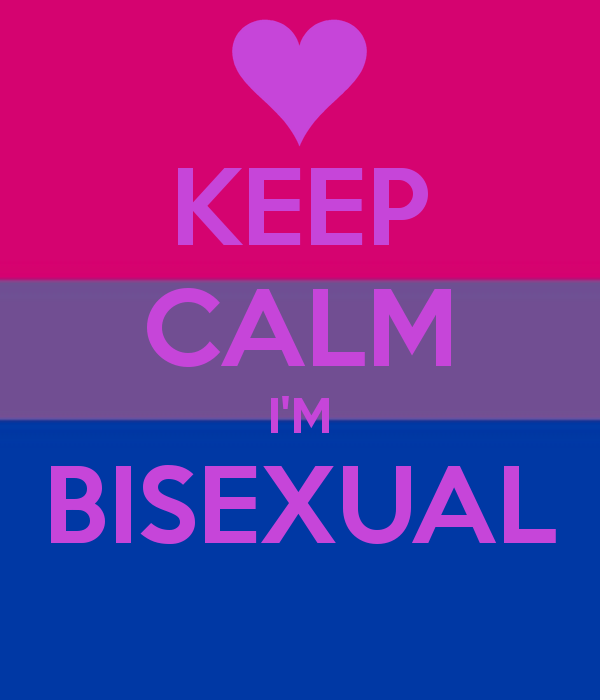
Its been a couple of week since we all Celebrated Bisexuality Day — a day dedicated to bringing respect, visibility, and awareness to all people who identify as having fluid identities. Since more than half of the LGBT community is comprised of bisexual people (1.8% of the total American population), it’s important to give recognition to a group that includes people of all gender identities from cis to trans and sexual orientations from queer to pansexual. We’re talking everyone from Anna Paquin, to Cynthia Nixon, Chirlane McCray, Tom Daley, Angelina Jolie, Billie Joe Armstrong, Megan Fox, Clive Davis, Megan Mullally, Andy Dick, David Bowie, and Lady Gaga.
Bisexuality can sometimes feel like a largely invisible orientation because of its historic neglect and ridicule in both the media and sciences. Often times, bisexuality can be portrayed as “greedy,” “a bridging mechanism,” to homosexuality, or worse, “imaginary.” All of which, of course, are inaccurate. In honor of bisexual visibility, Nerve took a look back at landmark scientific investigations which discussed both the validity and invalidity of bisexuality through the decades. This is how we got from Alfred Kinsey to Tom Daley.
 1886 — THE BISEXUAL PRESSURE POINT
1886 — THE BISEXUAL PRESSURE POINT
The early case studies of Richard von Krafft-Ebing, author of the seminal work Psychopathia Sexualis, found that most bisexual-identifying men have sex with women due to societal pressures, but in truth have sexual attraction primarily to men. While his theories proved to be problematic, Krafft-Ebing’s findings would be utilized in research on homosexuality and bisexuality throughout the 20th century.
 1940S — INTRODUCING THE KINSEY SCALE
1940S — INTRODUCING THE KINSEY SCALE
Alfred Kinsey, 20th century sex researcher, declared in his 1948 work Sexual Behavior in the Human Male that “46% of the male population had engaged in both heterosexual and homosexual activities, or ‘reacted to’ persons of both sexes, in the course of their adult lives.” As for women, Kinsey found between 6 and 14% of women have homosexual experiences in their past. The results were groundbreaking. Kinsey had developed his own scale to accommodate his belief in sexual fluidity — ranging from 0 (heterosexual) to 6 (homosexual) and found many landed somewhere in between. Kinsey brought forth the notion of sexuality lying on a continuum. Bisexuality, instead of being directly in the middle of homosexuality and heterosexuality, could identify those with varying degrees of sexual attraction over time. “Males do not represent two discrete populations, heterosexual and homosexual,” he wrote. “The world is not to be divided into sheep and goats.”
1979 — IS BISEXUALITY DIFFERENT FROM HOMOSEXUALITY?
A 1979 study of 30 men found that those who identified themselves as bisexuals were indistinguishable from homosexuals on measures of arousal while viewing different erotic material. “In terms of physiological arousal, the erectile responses of the homosexual and bisexual groups were indistinguishable, a finding which questions the existence of male bisexuality as distinct from homosexuality or as a different sexual orientation in males,” the study concluded. Over 25 years later, a disturbingly similar study would be published.
1994 — BISEXUALITY AS A WAY TO COME OUT
A 1994 survey published by The Advocate, a gay-oriented magazine, found that, before identifying as gay, 40% of gay men had described themselves as “bisexual.” Which means, according to this well-publicized survey, almost half of all bisexual men were actually just gay, thus cementing the idea that bisexuality was a transitional stage or a safer way of coming out of the closet. While this transitional bisexual stage is true of some bisexual identifying men and women, this cultural narrative set things back for bisexuality being seen as its own distinct orientation. Pundits Andrew Sullivan and Dan Savage have been criticized for statements reaffirming that bisexuality is just a stop before gay for many.
2005 —BISEXUAL MEN DON’T EXIST
In 2005, researchers at Northwestern University shook things up when they claimed the 1.7 percent of men who identified as bisexual were perhaps mistaken. Or, in the words of Carrie from Sex and the City, “I‘m not even sure bisexuality exists. I think it’s just a layover on the way to Gay Town.”In the study, a team of psychologists measured genital arousal patterns of bisexual men in response to erotic imagery of both men and women. The results showed that men who identified as bisexual were often exclusively aroused to either men or women (not both), and were most often exclusively sexually aroused by men.
The study was conducted with 33 bisexual men and largely sourced subjects from publications in gay-oriented newspapers. Still, the study made hundreds of newspapers, like the famous New York Times headline: “Straight, Gay, or Lying?” which inferred that orientation was either dichotomous or fallacious. Men who continued to be attracted to both genders were understandably confused by these findings.
2008 — BISEXUALS ARE MOSTLY WOMEN
About 1.5 percent of American women identify themselves as bisexual. And, for whatever reason (some studies suggest sexual fluidity in women is an advantage for child rearing), bisexuality appears easier to demonstrate in the female sex. A 10-year longitudinal study published by researcher Lisa Diamond in 2008 attempted to test out the “transitional theory” — that bisexual women would eventually get together with men after a series of college experimentations. The study found that at the end of the 10 years, more women adopted bisexual identities than relinquished them.
Bisexual women also had stable distributions of arousal to men and women in genital arousal studies. In fact, women who report the highest sex drives also identify as being attracted to both men and women rather than just exlusively men or women. You can throw the “putting on a show for the boys” idea out the window.
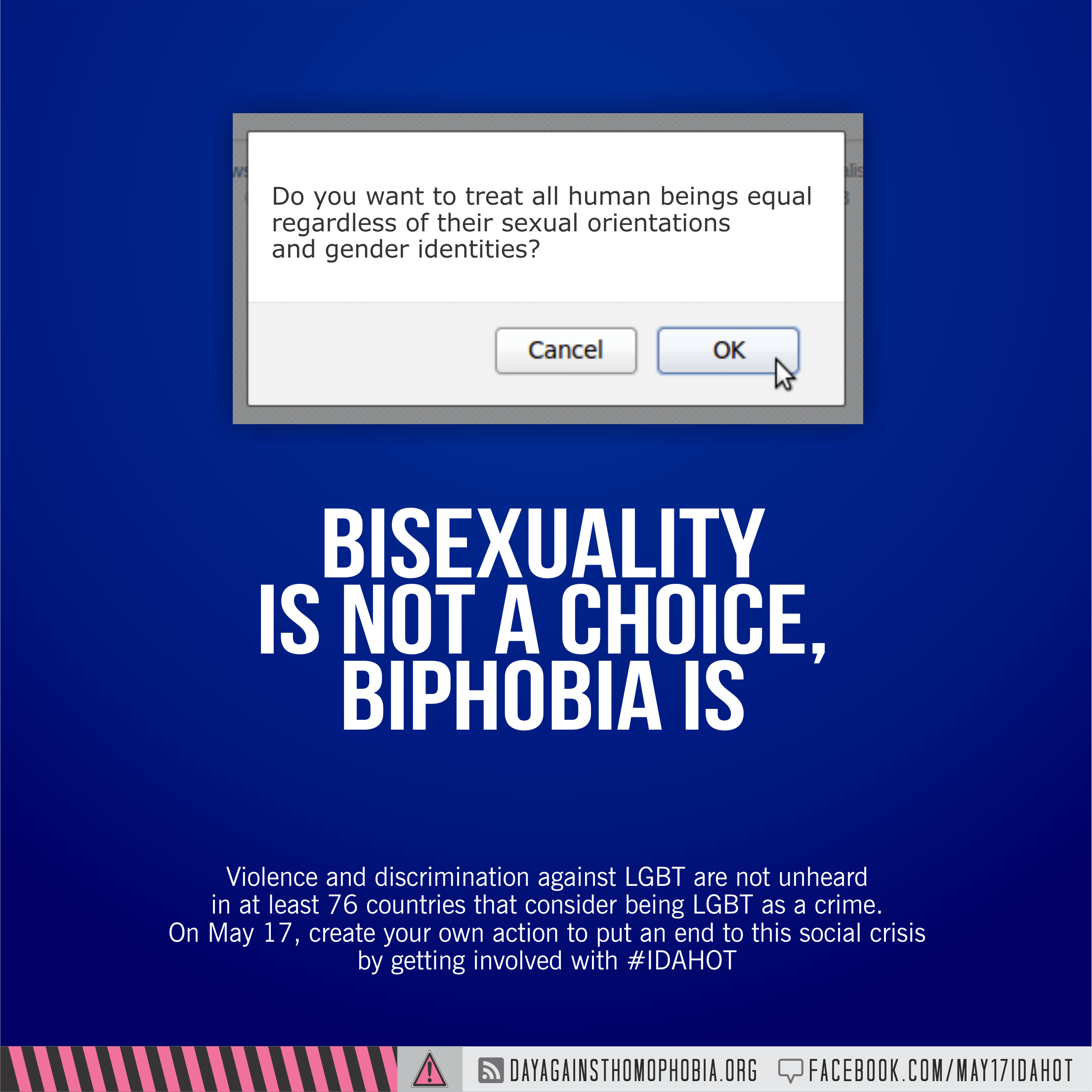
2011 — ACTUALLY, BISEXUAL MEN DO EXIST
In 2011, Northwestern University came back and apologized for the six years it had rejected the validity of an entire sexual orientation and bisexual men’s experience. Their 2005 study had mainly sourced participants from gay mags, but this time around, the researchers found subjects who identified as bisexual and who had both sexual and romantic relationships with both men and women. While watching videos of female and male same-sex encounters, the bisexual men doing the study were aroused all around. All combinations of videos gave them boners. Meaning, bisexual men were just what they said they were: bisexual men.
Why did this study and not the study from 2005 validate bisexuality? The study sample was more accurate and took into account a key part about sexuality: it’s complex. Physical arousal is only one component of sexual orientation. Romantic attraction, emotional intimacy, and perceived attraction also play a large role in who we’re attracted to — it’s not just purely boners hooked up to machines. Many bisexuals were both relieved and sort of offended by the new findings.
2013 — BISEXUALS HAVE IT THE HARDEST
In an interview with The Daily Beast, Cynthia Nixon once said, “I don’t pull out the “bisexual” word because nobody likes the bisexuals. Everybody likes to dump on the bisexuals.” Nixon isn’t ready to identify as bi, despite the fact that she is attracted to both genders. And Nixon’s feeling of rejection from outside communities might have a lot to do with the overall prejudice against bisexuals. A 2013 survey conducted by the University of Pittsburgh found that of 1,500 people surveyed, 15% of the respondents did not believe bisexuality was a legitimate sexual orientation. Straight men were the most likely to have negative attitudes towards bisexuals, while female bisexuals were seen more favorably than male bisexuals.
Another surprising finding? Those who identified as gay or lesbian also responded less positively to the idea of bisexuality than those who were bisexual. Bisexuals can feel marginalized by even those within the LGBTQ community. These feelings of isolation can lead to high instances of substance abuse, depression, and risky sexual activity, the study reported.
The historical belief that bisexuality is an invalid identity is not just more prevalent than you might think, it’s also incredibly damaging. By changing our own framing of the orientation — from something “weird” or “confused” or “experimental” to a legitimate identification, we can change the underlying social and scientific prejudice against bi-identifying individuals. Because let’s face it, everyone. Bisexuality exists and it’s wonderful.

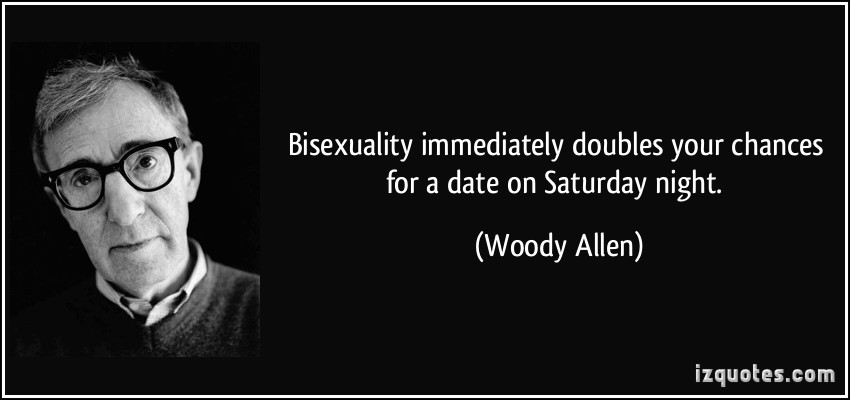 1886 — THE BISEXUAL PRESSURE POINT
1886 — THE BISEXUAL PRESSURE POINT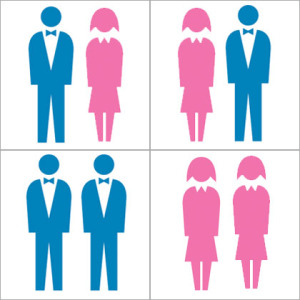 1940S — INTRODUCING THE KINSEY SCALE
1940S — INTRODUCING THE KINSEY SCALE